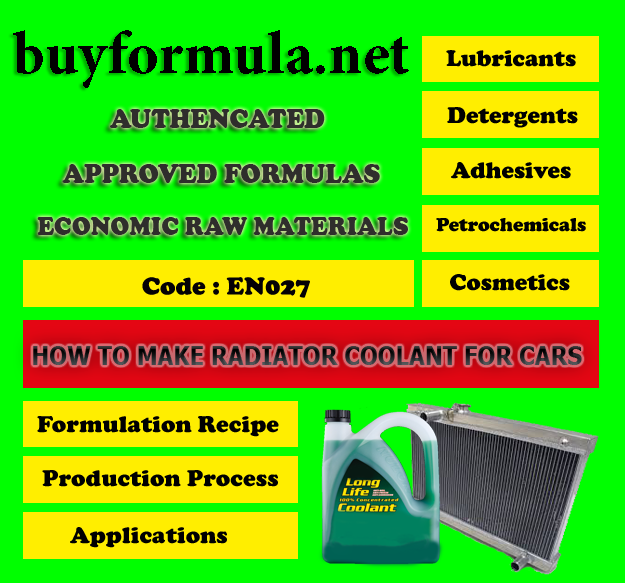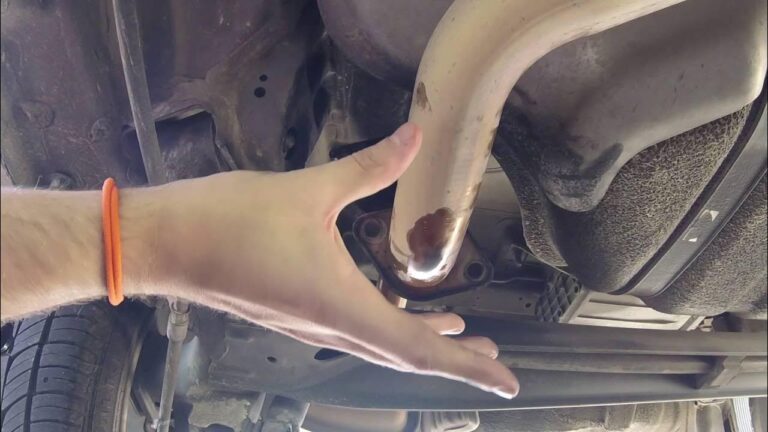How to Make Coolant
To make coolant, mix water and antifreeze in a 50:50 ratio. Blend well before use.
Coolant is a vital fluid that helps regulate the temperature of your vehicle’s engine. Making your own coolant can be a cost-effective and convenient option, especially when you need it in a pinch. A simple mixture of water and antifreeze is all you need to create an effective coolant solution that will keep your engine running smoothly.
In this guide, we will walk you through the steps to make coolant at home, highlighting the importance of proper coolant levels and the benefits of DIY coolant. By following these steps, you can ensure that your vehicle’s engine stays cool and protected from overheating issues.

Credit: www.buyformula.net
Choosing The Right Coolant
When it comes to maintaining your vehicle’s cooling system, choosing the right coolant is essential. The type of coolant you use can significantly impact the performance and longevity of your car’s engine. Understanding the different types of coolants and considerations for your vehicle can help you make an informed decision that ensures optimal cooling system health.
Types Of Coolants
There are various types of coolants available in the market, each with its specific composition and properties.
- Ethylene Glycol-based Coolants: These are the most commonly used coolants, offering excellent heat transfer and anti-corrosion properties.
- Propylene Glycol-based Coolants: Ideal for environmentally conscious users, as they are less toxic and biodegradable compared to ethylene glycol-based coolants.
- Hybrid Organic Acid Technology (HOAT) Coolants: Known for their extended service life and compatibility with a wide range of vehicle models.
- Organic Acid Technology (OAT) Coolants: Formulated to provide long-lasting protection for aluminum and cast iron engine components.
Considerations For Your Vehicle
When selecting a coolant for your vehicle, consider the following factors to ensure compatibility and optimal performance:
- Manufacturer Recommendations: Consult your vehicle’s manual or manufacturer specifications to determine the recommended coolant type for your specific make and model.
- Climate Conditions: Choose a coolant that is suitable for the prevailing climate in your area, ensuring effective heat transfer and freeze protection.
- Corrosion Protection: Select a coolant with robust anti-corrosion properties to safeguard the cooling system components and prolong their lifespan.
- Compatibility with Materials: Ensure that the coolant is compatible with the materials used in your engine, such as aluminum, copper, and plastics, to prevent damage and leaks.
Preparing To Make Coolant
Making coolant for your vehicle is a vital maintenance task that can help protect your engine from overheating. Before you begin the process of preparing coolant, ensure that you have all the necessary equipment and follow important safety measures.
Gathering The Necessary Equipment
When making coolant, make sure to gather the essential equipment to streamline the process:
- Distilled Water: Ensures purity of coolant mixture
- Coolant Concentrate: Provides the necessary cooling properties
- Funnel: Helps in transferring the mixture into the radiator
- Measuring Cup: Ensures precise measurement of ingredients
- Gloves and Goggles: Protects your skin and eyes from contact with chemicals
Ensuring Safety Measures
Before you start making coolant, prioritize safety by following these measures:
- Work in a Well-Ventilated Area: Prevent inhalation of fumes
- Wear Protective Gear: Gloves and goggles to avoid skin and eye irritation
- Use Labelled Containers: Store coolant in clearly marked containers
- Keep Away from Children and Pets: Store coolant out of reach
Mixing The Coolant
When making coolant, it is important to carefully mix the ingredients for optimal performance. Combine the coolant concentrate with distilled water in the correct ratio to ensure a well-functioning cooling system.
Understanding The Coolant-to-water Ratio
The coolant-to-water ratio is crucial for engine performance. It ensures optimal cooling and prevents overheating.
Step-by-step Mixing Instructions
Follow these simple steps to mix your coolant effectively:
- Check the manufacturer’s recommendations for the correct ratio.
- Prepare a clean container for mixing the coolant and water.
- Dilute the coolant with the appropriate amount of distilled water.
- Stir the mixture well to ensure uniform distribution.
- Test the mixture with a hydrometer to verify the ratio.
- Top off your vehicle’s coolant reservoir with the mixed coolant.

Credit: www.motortrend.com
Testing And Adjusting The Coolant
Welcome to the crucial part of maintaining your vehicle’s cooling system – Testing and Adjusting the Coolant. Ensuring the proper mixture of coolant in your vehicle’s system is essential to prevent corrosion and overheating. Let’s dive into the two critical processes required to maintain the effectiveness of your coolant: conducting a freeze point test and adjusting the mixture if needed.
Conducting A Freeze Point Test
Start by using a refractometer to measure the freeze point of your coolant. Retrieve a sample of the coolant and place it on the refractometer’s prism. Ensure that the instrument is calibrated and then look through the eyepiece to determine the freeze point. A typical freeze point for coolant should be at least -34 degrees Celsius (-29.2 degrees Fahrenheit). If the measured freeze point is higher, it is an indication that the coolant mixture may need adjustment.
Adjusting The Mixture If Needed
If the freeze point test reveals that the coolant mixture needs adjustment, you can either add more coolant or water depending on the result. Refer to your vehicle’s manufacturer recommendations or the coolant product guidelines for the appropriate ratios. You can use a hydrometer or a coolant refractometer to determine the current mixture ratio. Adjust the ratio by adding the necessary amount of coolant or water and retest using the refractometer until the desired freeze point is achieved. Once the mixture is optimized, your vehicle’s cooling system will be well-equipped to maintain the proper operating temperature.
Properly Storing And Using Coolant
When it comes to maintaining your vehicle’s cooling system, proper storage and usage of coolant are crucial. Not only does it help in preventing damage to the engine, but it also ensures the longevity and efficiency of your car. In this section, we will discuss the essential storage guidelines and safety precautions to consider when handling coolant.
Storage Guidelines
Storing coolant correctly is vital to maintain its quality and effectiveness. Follow these guidelines to ensure you make the most out of your coolant:
- Store coolant in a cool, dry place away from direct sunlight and extreme temperatures.
- Avoid exposing coolant containers to moisture or water to prevent contamination.
- Keep the coolant bottles tightly sealed to prevent air and moisture from entering.
- Store coolant away from any flammable substances to reduce the risk of fire hazards.
- Read the manufacturer’s instructions for any specific storage requirements for the coolant brand you are using.
Safety Precautions When Using Coolant
Proper precautions should be taken when using coolant to ensure your safety and prevent any mishaps. Here are some safety tips to keep in mind:
- Always wear protective gloves and safety goggles when handling coolant to avoid skin and eye irritation.
- Avoid prolonged exposure to coolant fumes as they can be harmful. Ensure proper ventilation when working with coolant.
- If accidental contact or ingestion occurs, seek immediate medical attention and provide the healthcare professional with the coolant’s safety data sheet.
- Ensure the engine is cool before removing the radiator or coolant cap to avoid potential burns from hot coolant.
- Dispose of used coolant properly by following local regulations and environmental guidelines.
- Keep coolant bottles out of reach of children and pets to prevent accidental ingestion.
By following these storage guidelines and safety precautions, you can protect yourself, your vehicle, and the environment while efficiently maintaining your cooling system. Remember, caution and proper handling are key when it comes to coolant!

Credit: m.youtube.com
Frequently Asked Questions On How To Make Coolant
Can You Make Your Own Coolant?
Yes, you can make your own coolant using a mixture of distilled water and antifreeze. Just follow the recommended ratio in your vehicle’s manual. Keep in mind that it’s crucial to use the right type of antifreeze for your specific vehicle.
How Is Coolant Made?
Coolant is made by combining water with antifreeze chemicals to regulate engine temperature and prevent freezing.
What Can I Use Instead Of Coolant?
You can use a mixture of water and antifreeze or distilled water as a coolant alternative.
What Are The Raw Materials For Coolant?
The raw materials for coolant include water, ethylene glycol, propylene glycol, corrosion inhibitors, and anti-freeze agents.
How Do I Make Coolant At Home?
To make coolant at home, mix equal parts of distilled water and ethylene glycol antifreeze.
What Are The Ingredients For Making Coolant?
The ingredients for making coolant include distilled water and ethylene glycol antifreeze.
Is It Safe To Make Coolant On My Own?
Yes, it is safe to make coolant at home by following the proper instructions and using the correct ingredients.
Conclusion
To sum up, making coolant is a simple and cost-effective process that will help keep your vehicle running smoothly. By following the steps outlined in this guide, you can create your own coolant and avoid the high costs associated with purchasing pre-made solutions.
Additionally, creating your own coolant allows you to control the quality and composition, ensuring that your vehicle’s cooling system operates at its best. With just a few simple ingredients and the right precautions, you can easily make coolant at home.


